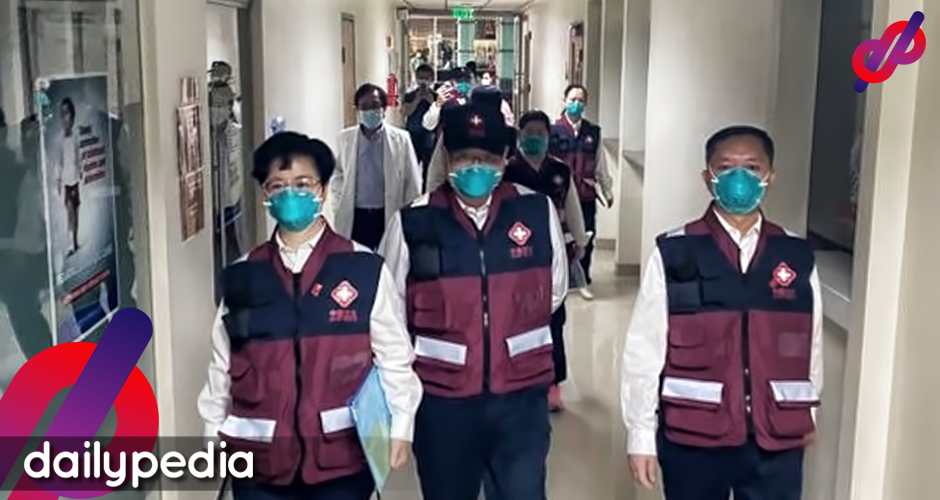A Chinese medical team of 12 members deemed the Philippines incapable of cutting off the source of COVID-19 in the country several days ago. But on Friday, the team praised the Filipinos for remaining professional especially at a time like this.
After Weng Shangeng and her team visited various health facilities, they advised the Philippines to establish makeshift hospitals called “Fangcang” for large-scale medical isolation.

“Because of limited beds and testing capacity in the Philippines, many of the COVID-19 patients are still quarantined at home,” said Weng, who is also the leader of the team.
The Fangcang model can help reduce infection rates and increase recovery rates.
“In this way, mild cases can be admitted to the hospital for observation so as to prevent mild cases from becoming severe cases.”
The Research Institute for Tropical Medicine (RITM), which is the country’s largest COVID-19 detection facility, only has two laboratories that can run a laughable 700 tests a day, and that isn’t enough according to Weng. The virus detecting capacity of laboratories needs to be worked on.
“That is to say, if they work at full capacity, the capacity can now reach 1,400 each day. In addition, they are building a third laboratory, which is expected to reach 2,100 a day in the short term testing ability.”
But on Friday, the team had something positive to say about the country’s frontliners, saying that they are impressed with the professionalism displayed.
“The medical staff in the Philippines are very professional. They are able to follow the standard protocol in the diagnosis and treatment of COVID-19 and the results of the treatment are good with a high success rate,” the group said with the help of an English translator during a virtual forum posted on Facebook by CCTV Asia Pacific.
The team had nothing but praise for efforts put it in by the health workers considering the insufficiency of mixed factors they have to work with.
“We are deeply moved by their perseverance and active work of the medical staff despite the shortage of manpower, PPEs, and the sub-par work conditions.”
The team pointed out the fact that detection capacity needs to be improved, along with the lack of manpower, and health workers getting infected as they are on duty.
“At the present, there is still a shortage of beds and the detection capacity is to be further improved. There are insufficient medical staff and medical materials and there is also a problem with medical workers getting infected in some hospitals.”
Even with all the handicaps, the team believes “that with the efforts of the Philippine government, DOH and the cooperation of the Filipino, the Philippines will surely achieve a victory in fighting this pandemic.”
According to the Chinese Embassy, the team of 12 Chinese medical experts has visited more than 10 frontline medical agencies, such as the Research Institute for Tropical Medicine, Lung Center of the Philippines and Chinese General Hospital and Medical Center. The team shared their experience and practice on preventing COVID-19, diagnosis and treatment, and tips with public health officials and professionals.
As of Friday, the DOH recorded 6,087 confirmed cases of COVID-19, including 397 deaths and 516 recoveries.


